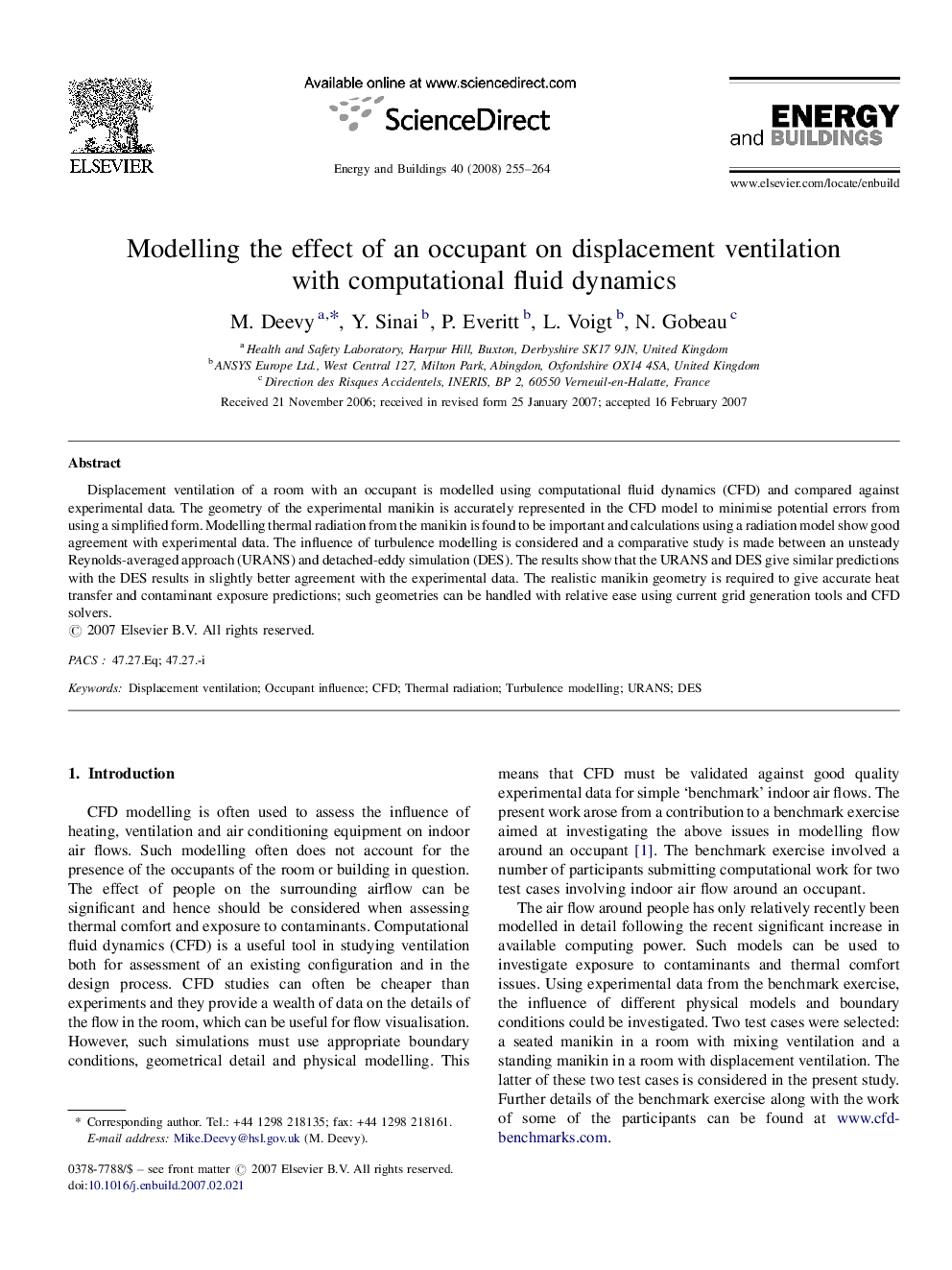| Article ID | Journal | Published Year | Pages | File Type |
|---|---|---|---|---|
| 265139 | Energy and Buildings | 2008 | 10 Pages |
Displacement ventilation of a room with an occupant is modelled using computational fluid dynamics (CFD) and compared against experimental data. The geometry of the experimental manikin is accurately represented in the CFD model to minimise potential errors from using a simplified form. Modelling thermal radiation from the manikin is found to be important and calculations using a radiation model show good agreement with experimental data. The influence of turbulence modelling is considered and a comparative study is made between an unsteady Reynolds-averaged approach (URANS) and detached-eddy simulation (DES). The results show that the URANS and DES give similar predictions with the DES results in slightly better agreement with the experimental data. The realistic manikin geometry is required to give accurate heat transfer and contaminant exposure predictions; such geometries can be handled with relative ease using current grid generation tools and CFD solvers.
